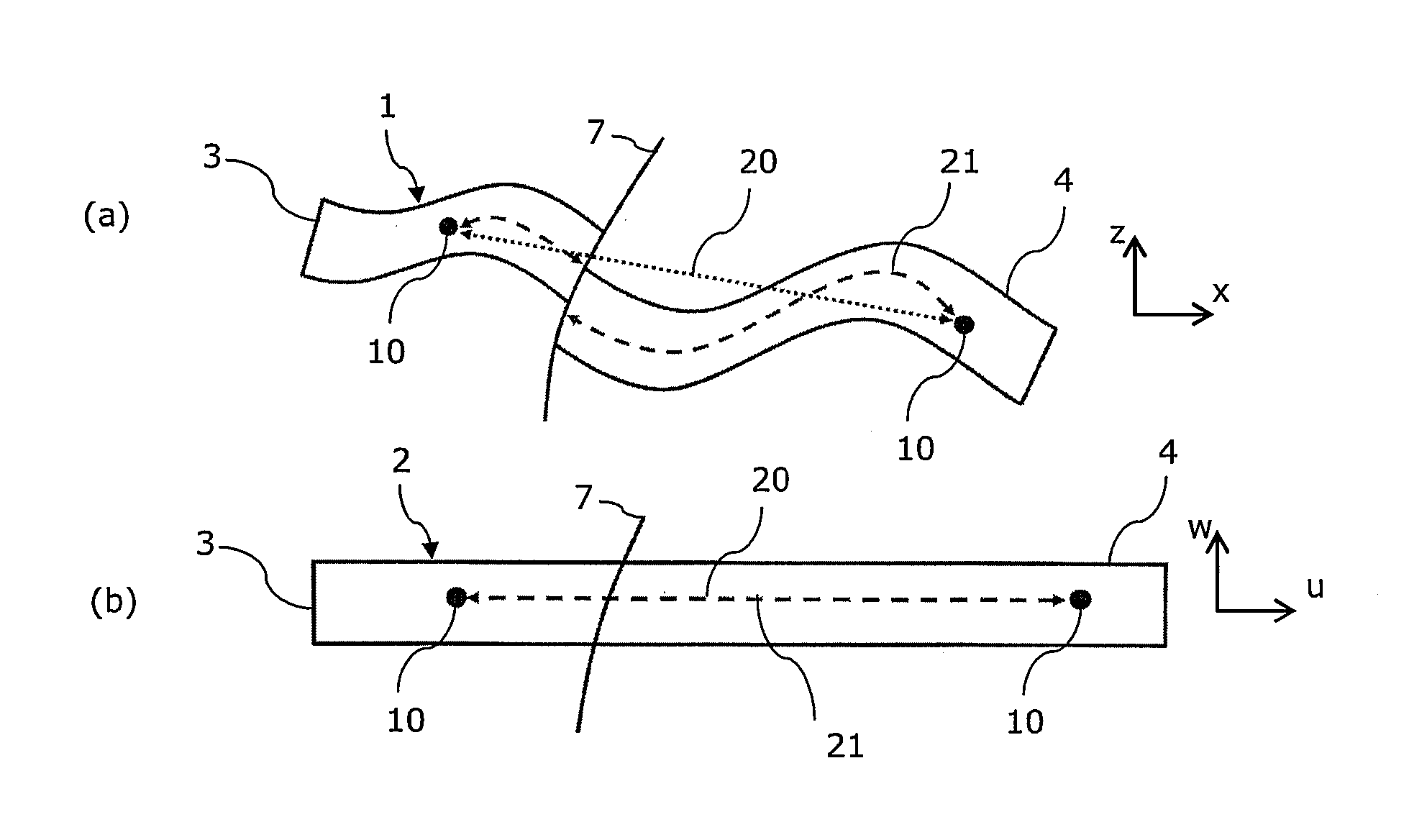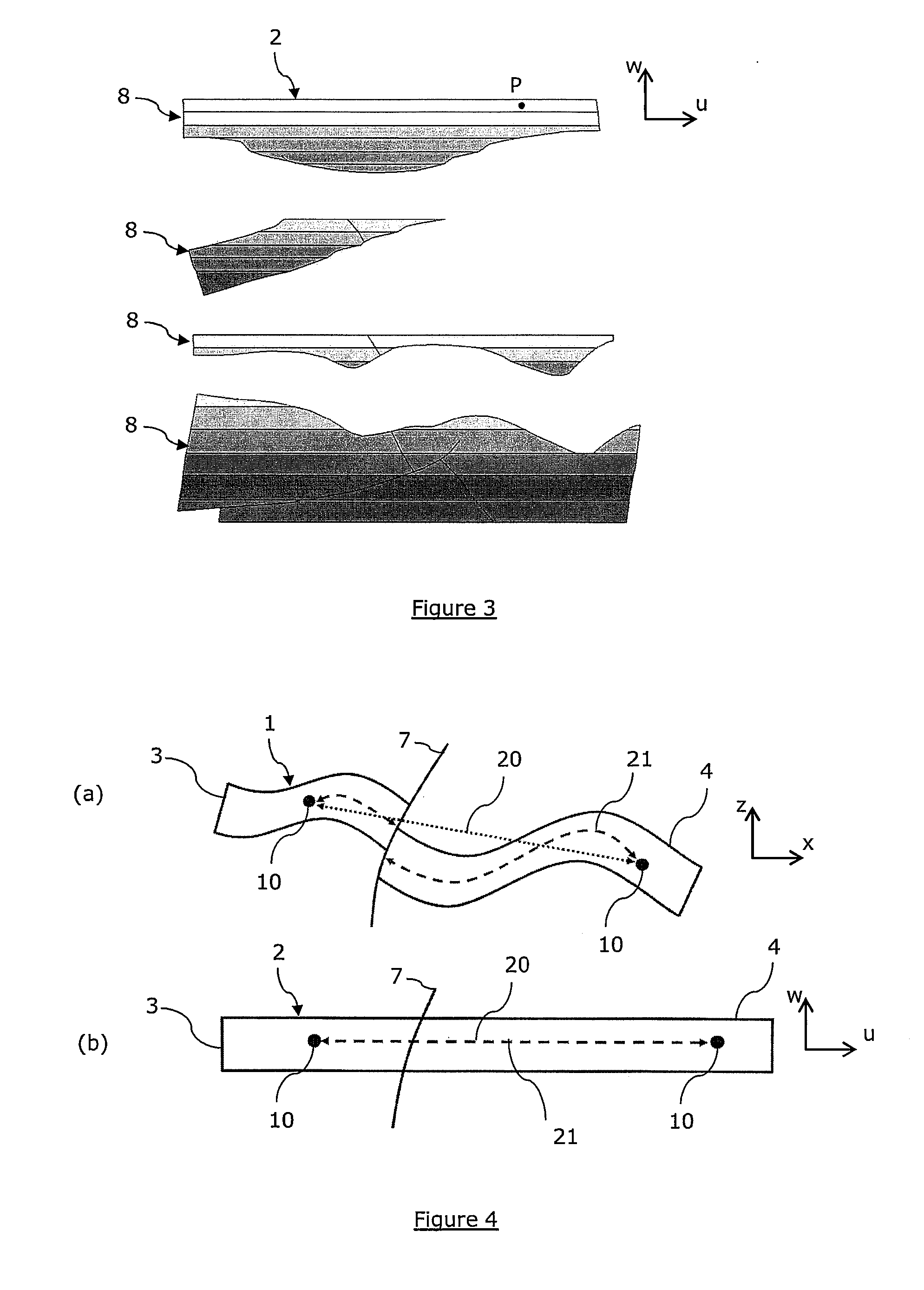Method for building a depositional space corresponding to a geological domain
a depositional space and domain technology, applied in the field of stratified terrain modeling, can solve the problems of inaccurate geological methods, badly-shaped (concave or zero-volume) elements, and achieve the effect of simplifying the processing of geological models
- Summary
- Abstract
- Description
- Claims
- Application Information
AI Technical Summary
Benefits of technology
Problems solved by technology
Method used
Image
Examples
first embodiment
[0128]With reference to FIG. 5, in a first embodiment, the geological domain can be represented by a 3D conformal mesh 9 whose elements 11 are all tetrahedra. The generation of the mesh is not within the scope of the invention and can be done following any classical method known in the art. Each tetrahedron has four facets 12, and each of these four facets can be simply identified with an index between 1 and 4. Facets in the tetrahedral mesh may thus be represented unambiguously by a pair (T, J) where T is a tetrahedron and J an index between 1 and 4. Let us also consider that the data structure representing a single tetrahedron t is encoded so that memory slots are reserved to store and retrieve an array of four integer values A(t)={a1, a2, a3, a4}, each aj being associated with the facet (t, j), the jth facet of t. The values of the aj may be set as follows:[0129]if the facet (t, j) does not match a boundary of set B, then aj=−1,[0130]if the facet (t, j) matches the boundary with ...
second embodiment
[0171]In a second embodiment, the geological domain 1 can be represented by a set M of 2D independent meshes (for example made of triangles 12), each of these meshes representing a boundary 4 of the set B. The generation of the 2D meshes is not within the scope of the invention and can be done following any classical method known in the art. M can be represented for instance by a linear list M={M1, M2, M3, . . . , Mn}. The data structure representing such a triangular mesh Mj is encoded so that memory slots are reserved to store and retrieve an integer value A(Mj). The value of A(Mj) is set so that if the mesh Mj represents the boundary Bi, then A(Mj) is equal to the corresponding geological ID bi (equal to i for example). The value of the A(Mj) may be set during an initialization step taking place at the beginning of the boundary matching step. Then, retrieving all the triangles that correspond to a given boundary Bi of the geological domain may involve the following steps:[0172]fi...
PUM
 Login to View More
Login to View More Abstract
Description
Claims
Application Information
 Login to View More
Login to View More - R&D
- Intellectual Property
- Life Sciences
- Materials
- Tech Scout
- Unparalleled Data Quality
- Higher Quality Content
- 60% Fewer Hallucinations
Browse by: Latest US Patents, China's latest patents, Technical Efficacy Thesaurus, Application Domain, Technology Topic, Popular Technical Reports.
© 2025 PatSnap. All rights reserved.Legal|Privacy policy|Modern Slavery Act Transparency Statement|Sitemap|About US| Contact US: help@patsnap.com



